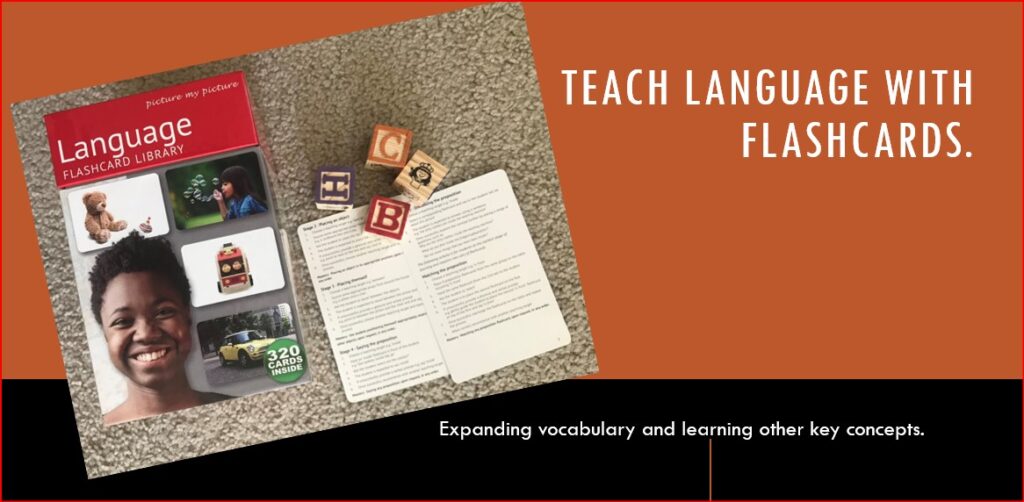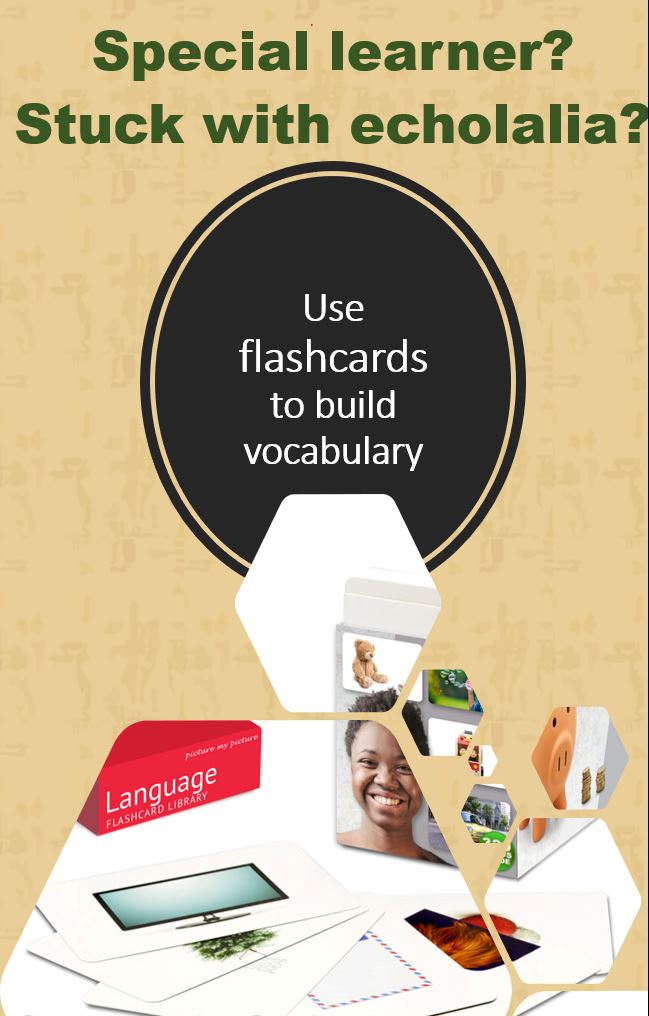 Piecing language for a gestalt language learner has been quite an interesting and exhaustive task. While you have to retain your focus on core words one has to teach them as practically as possible. Do you find yourself in a scenario where you are stuck with therapists doing random words that are hard to generalize?Is the language not progressing beyond words/phrases used for requesting needs and wants. Then, read on – how to build vocabulary and help language acquisition. Picture flashcards are my first choice to work on speech and language goals.
Piecing language for a gestalt language learner has been quite an interesting and exhaustive task. While you have to retain your focus on core words one has to teach them as practically as possible. Do you find yourself in a scenario where you are stuck with therapists doing random words that are hard to generalize?Is the language not progressing beyond words/phrases used for requesting needs and wants. Then, read on – how to build vocabulary and help language acquisition. Picture flashcards are my first choice to work on speech and language goals.
So why use flashcards? Flashcards improve your metacognition and they help boost visual memory.
While cognition means thinking, metacognition means thinking about thinking.
When you check your answers with the other side(of the flashcard), you are essentially comparing your thinking to the correct answer. Assessing your correctness is a great way to improve your metacognition. This promotes reflecting, inferencing, and thus a deeper understanding.
On the other hand, visual memory involves the ability to store and retrieve previously experienced visual sensations and perceptions when you are no longer seeing or experiencing them. E.g remembering an exact detail of an incident, phone numbers, my son has an excellent recall of all his missing number/alphabet magnets. So, if your child is a visual learner, you cannot go wrong with flashcards.
Strategize using language flashcards to teach core words:-
- When using flashcards to teach, focus on a genre of core words, like a few easy prepositions. Some easy adjectives that quickly double up as opposites and are concrete like “empty” and “full” vs “light” and “heavy”. I suggest that while you teach core words, pair up with categories, like teaching emotions, what goes together pairs as vocabulary words.
- Spaced repetition: Many learners use spaced repetition for remembering new words. It is easy and natural to create a flashcard with a picture on the front side and its meaning on the back, and then just review it with increasing intervals. This increases active recall, so use a small set of cards and practice them in quick succession repeatedly. Offer praise on every correct response and review the failed ones later, separately. Don’t explain them in between your practice, i.e keep up with spaced repetition. Read more on this technique and its benefits here.
- The most important challenge is using appropriate materials. Use big and clear pictures without heavy background. Kids with special needs often have issues with visual discrimination. So look up pictures that don’t clutter up or seem fancy with too many details. It is recommended to go with real-world pictures that are clear and big enough to interpret/observe without any confusing background.
- Quickly replace with 3D items upon mastery with flashcards on that concept.
Once a child gains mastery labeling/identifying picture cards, generalize it will real items, e.g actual toothpaste versus a picture of the same. - Use flashcards to teach language by making simple sentences and modeling them in text-to-speech apps. In short, associate the picture to the sentence. Use a spaced repetition of flashcards.
I ended up looking into many different sets of flashcards. After researching quite a bit, I stumbled upon this set “Picture my picture” that matched most of the above criteria. It covered a diverse set of emerging skills like the basic vocabulary to advanced concepts like things that “go together”.
Take a look at some examples offered in this set.
- Feelings and emotions-10 types. Each picture in the set shows different people with the same gesture.
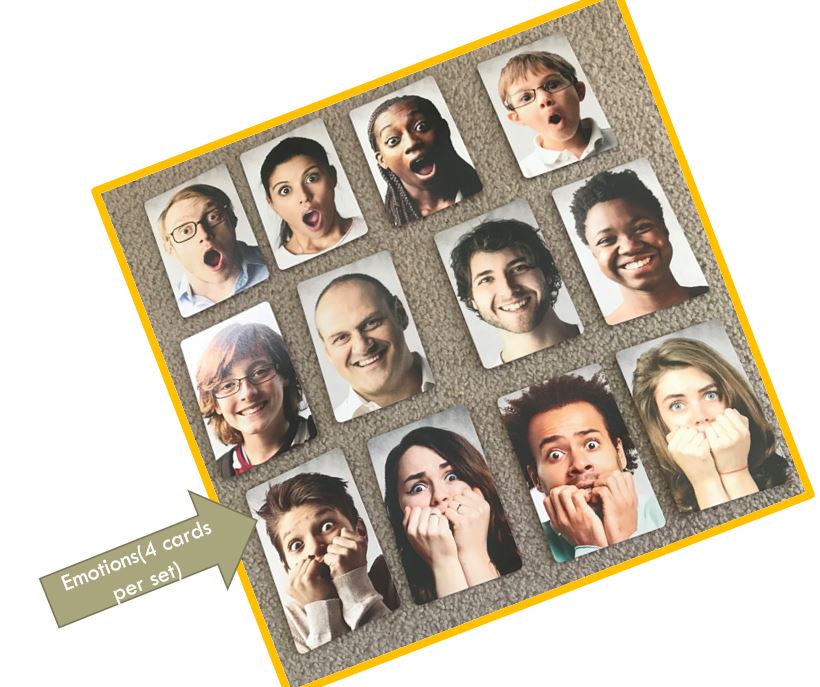
- Opposites(10 types), prepositions 7 spatial concepts, 5 cards each. Notice how they have pictured prepositions over different categories like furniture, food, appliances, animals, and toys.
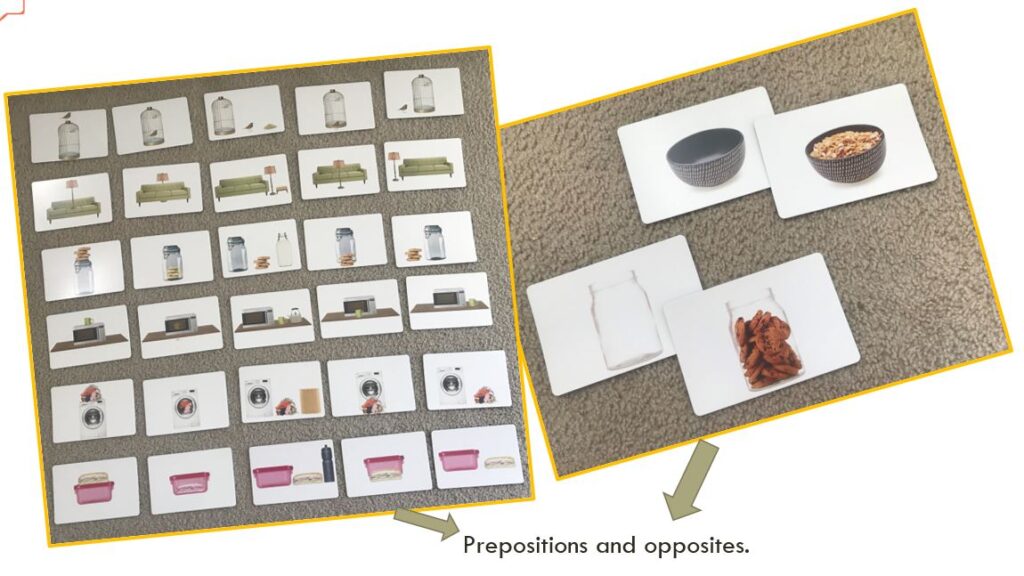
- Verbs – 40 actions.
- Categories – 8 category types(5 cards per set).
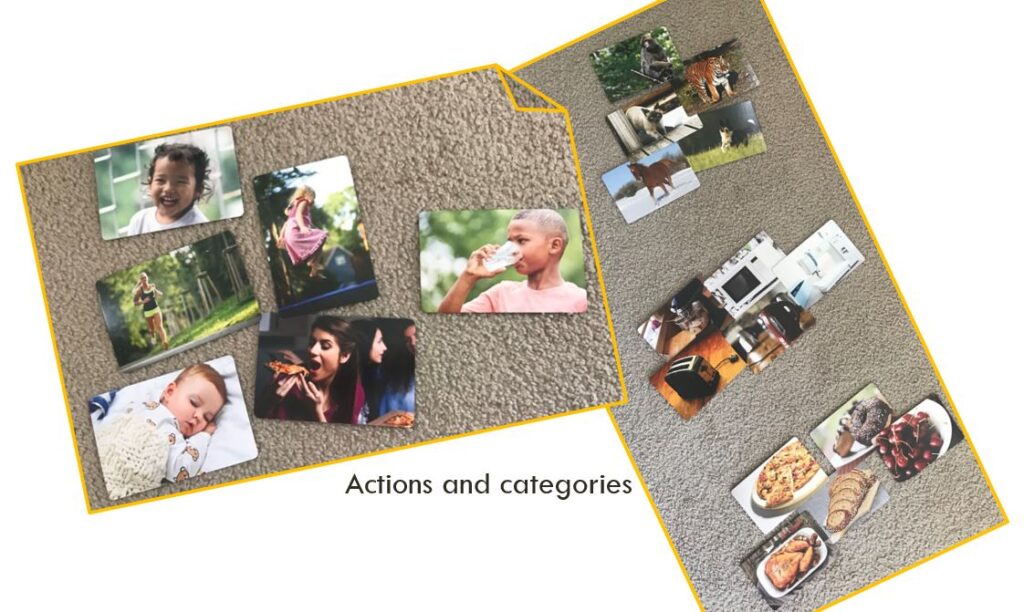
- Go Togethers – 20 pairs of associated objects. [table “” not found /]
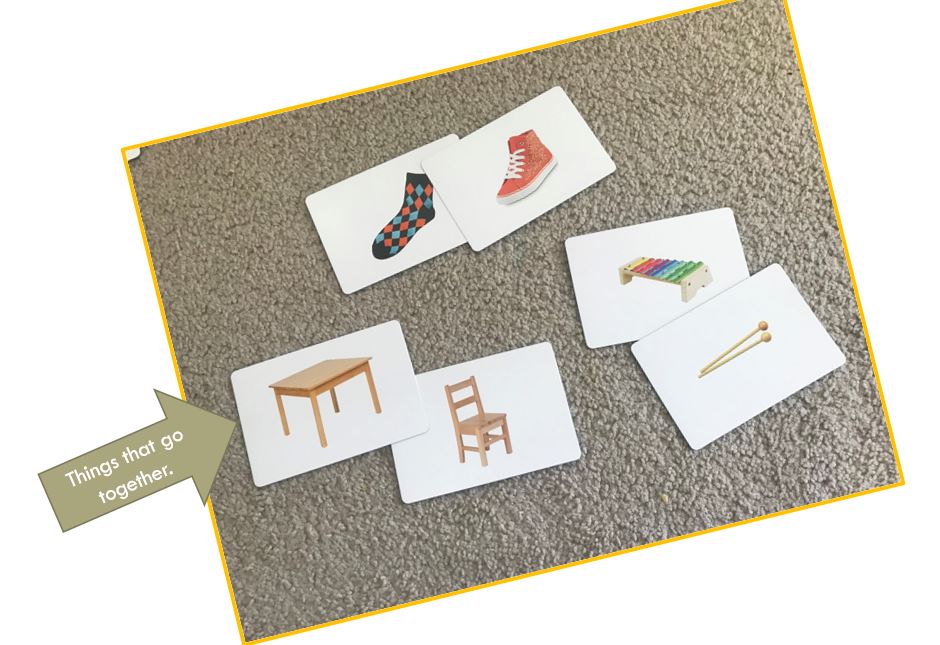
Overall- 320 cards per set. Each card measures 3.9” x 5.9” and is double-sided. The image is on the front and the teaching label is on the reverse side. This actually helps, as the child is not merely reading out the card and builds upon the child’s inferencing skills. You can get this set on Amazon here.
Alternatively, you can browse the collection on their website and choose a set to work on. They do offer individual sets to suit customized learning.
Final thoughts:
My son took to these cards very enthusiastically. I started with individual cards to label and reiterated steps 1-5 to teach a novel word/concept. He quickly gained mastery on most opposites and actions using the strategies above. He kept flipping the cards initially to read and then see the picture. This changed over a period of time, he adapted and responded well to a rapid repetition of cards. I have set these cards in different boxes and we practice a concept each time in quick repetition.
Some tips: Always model before expecting a response, when in doubt, teach. Make this flashcard activity simple and use intrinsic motivation to select a pair to teach and build momentum. Whether your kid has an expressive or receptive language delay, this is an effective way to expand vocabulary and work on language acquisition.
References:-
Optimizing learning using flashcards: Spacing is more effective than cramming.
https://onlinelibrary.wiley.com/doi/abs/10.1002/acp.1537
Porter, L. (2002). Educating young children with special needs. Crows Nest, Australia: Allen & Unwin.
A Case Study for Learning Possibility of Vocabulary Terms to Visual Learners
https://www.learntechlib.org/p/147354/
Carroll; James L. “A Visual Memory Scale (VMS) Designed to measure Short Term Visual Recognition Memory in 5 and 6-Year-Old Children.” Psychology in the Schools. April 1972, IV.-5, p. 152-157.
Bergan, John, Zimmerman, B.J. and Ferg, Naureen. “Effects of Variations in Content and Stimulus Grouping on Visual Sequential Memory “Journal of Educational Psychology.
Visual memory training for remedial readers.
http://scholarworks.csun.edu/bitstream/handle/10211.3/120838/DostalIvanka1974.pdf

